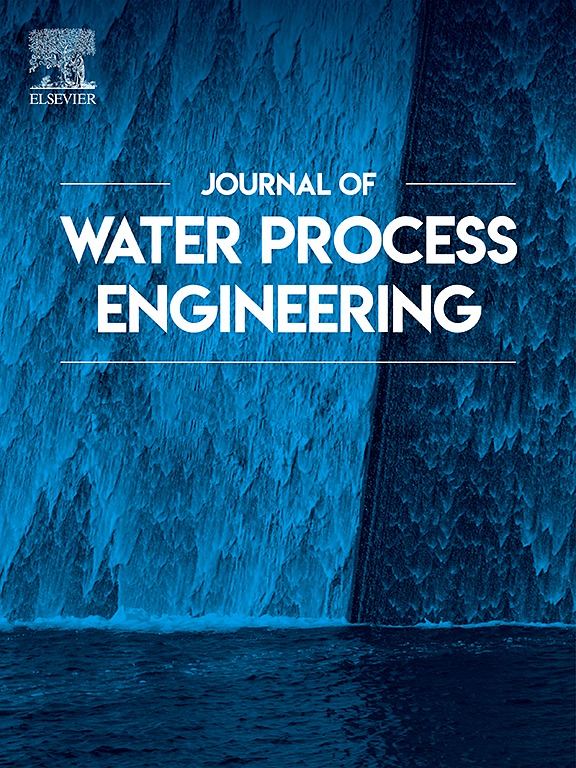Boosting hydrogen peroxide production in tubular carbon nitride with hydroxy modification for high-efficient photo-self-Fenton antibiotic degradation
IF 6.3
2区 工程技术
Q1 ENGINEERING, CHEMICAL
引用次数: 0
Abstract
Photo-Fenton process is known as an effective water treatment method due to its high efficiency, however, its application is limited by the need for exogenous hydrogen peroxide (H2O2). In this paper, a photo-self-Fenton system utilizing hydroxyl-modified tubular g-C3N4 (TCN-OH) as a photocatalyst to produce H2O2 in-situ to combine Fe ions was developed. The tubular morphology of TCN-OH enhances carrier mobility and increases the number of active sites available for H2O2 production. Meanwhile, the addition of Fe3+ facilitates the activation of hydroxyl radical (·OH) reactive species from H2O2, leading to the efficient degradation of tetracycline (TC) antibiotic pollutants under visible light irradiation. This study provides a conceptual design strategy for constructing optical-self-Fenton systems, providing a promising approach for the efficient treatment of industrial wastewater effluents.
求助全文
约1分钟内获得全文
求助全文
来源期刊

Journal of water process engineering
Biochemistry, Genetics and Molecular Biology-Biotechnology
CiteScore
10.70
自引率
8.60%
发文量
846
审稿时长
24 days
期刊介绍:
The Journal of Water Process Engineering aims to publish refereed, high-quality research papers with significant novelty and impact in all areas of the engineering of water and wastewater processing . Papers on advanced and novel treatment processes and technologies are particularly welcome. The Journal considers papers in areas such as nanotechnology and biotechnology applications in water, novel oxidation and separation processes, membrane processes (except those for desalination) , catalytic processes for the removal of water contaminants, sustainable processes, water reuse and recycling, water use and wastewater minimization, integrated/hybrid technology, process modeling of water treatment and novel treatment processes. Submissions on the subject of adsorbents, including standard measurements of adsorption kinetics and equilibrium will only be considered if there is a genuine case for novelty and contribution, for example highly novel, sustainable adsorbents and their use: papers on activated carbon-type materials derived from natural matter, or surfactant-modified clays and related minerals, would not fulfil this criterion. The Journal particularly welcomes contributions involving environmentally, economically and socially sustainable technology for water treatment, including those which are energy-efficient, with minimal or no chemical consumption, and capable of water recycling and reuse that minimizes the direct disposal of wastewater to the aquatic environment. Papers that describe novel ideas for solving issues related to water quality and availability are also welcome, as are those that show the transfer of techniques from other disciplines. The Journal will consider papers dealing with processes for various water matrices including drinking water (except desalination), domestic, urban and industrial wastewaters, in addition to their residues. It is expected that the journal will be of particular relevance to chemical and process engineers working in the field. The Journal welcomes Full Text papers, Short Communications, State-of-the-Art Reviews and Letters to Editors and Case Studies
 求助内容:
求助内容: 应助结果提醒方式:
应助结果提醒方式:


